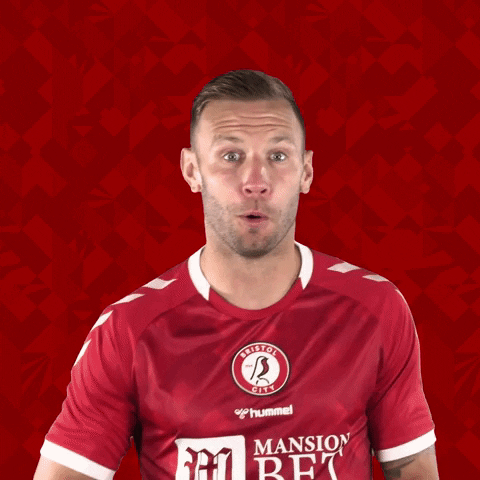Your Ultimate Guide to a Holistic SaaS Pricing Strategy
Your Ultimate Guide to a Holistic SaaS Pricing Strategy
Your Ultimate Guide to a Holistic SaaS Pricing Strategy
What pricing strategy is the right fit for your SaaS company? Dive into our guide for a complete overview of pricing models, strategies, and experiments you can implement for your unique product.
What pricing strategy is the right fit for your SaaS company? Dive into our guide for a complete overview of pricing models, strategies, and experiments you can implement for your unique product.
What pricing strategy is the right fit for your SaaS company? Dive into our guide for a complete overview of pricing models, strategies, and experiments you can implement for your unique product.



Does SaaS pricing strategy make your head spin? 🤕
You’re not alone. It’s a maze out there!
If you don’t get it right, your journey is over even before you start it.
But if you do… riches beyond your imagination await you! 💸

There are a ton of things you need to consider when you’re mapping out your pricing strategy.
You have to think about your product, customers, finances, pricing model, and so much more!
Feels a little overwhelming, right?
But fear not! We’re here to show you the right way out ⤵
What does pricing in SaaS entail?
Let’s get technical for a second:
SaaS pricing is a revenue generation model for software marketed as a service.
Instead of letting customers buy and own software, SaaS pricing leases its software solutions to customers through subscription models.
In simpler terms, this means…
The SaaS pricing model lets you subscribe to and use their service through a monthly fee or yearly fee payments from you.
As they say,

If you’ve used Notion to organize your life or Slack to communicate with your team, you already know how the basic SaaS subscription model works!
Now let’s move on to the next part of the puzzle:
How can you optimize your SaaS pricing?
Get your SaaS pricing right 🎯
If you fail at pricing your SaaS product correctly, you’re doomed. On the other hand, if you nail the pricing strategy, the benefits are boundless: your business will grow faster, you’ll be able to close more deals, and get more conversions!
Here’s two key things you should keep in mind to start with:
1. Balance your Customer Lifetime Value (LTV) against your Customer Acquisition Cost (CAC).
In the biz, we call this the CAC to LTV ratio.
CAC is Customer Acquisition Cost: This is basically the costs your business has to incur to bring in a new customer.
LTV is Lifetime Value: This is the total amount that a customer is predicted to spend on your product throughout the duration your client-service relationship (or ‘lifetime’).
Essentially, this ratio measures the relationship between the value of a customer over their lifetime and the cost of bringing in and converting that customer.
Let’s break it down:

Conversions are important for your business, but they are meaningless if you don’t ultimately make a profit from them.
If your LTV:CAC is lesser than 1, that means you’re losing revenue on every customer you land.
You ideally want your LTV:CAC ratio to be between 3 and 5, which means you should be earning at least three times what it costs for you to land a client.
This is where your pricing strategy, value proposition, and product-market fit come in.
2. Price it RIGHT!
You’ve got to price your product according to the value it realistically provides.
When customers think about the price you’re offering and the value you provide, you want them to think:

But it can be quite a mystery to figure out what pricing strategy actually works best for you.
Don’t worry; we’ve got you covered! Just keep reading on - we’ll take you through the pricing process!
The process to identify your perfect SaaS pricing strategy demystified🙌🏼
You need to nail these 3Ps to win your SaaS pricing strategy:
Positioning
Packaging
Pricing
To begin with, you need to ask yourself a few key questions:
1. Positioning: Who is your ideal customer? What does their growth journey look like?
Understand your target market. Use your buyer personas to create an ideal customer persona and map out what their growth journey will look like.
2. Packaging: How much value does your product offer?
Your business grows as your customer grows theirs. Knowing their journey will help you decide how you want to package your features and how much value each package will offer.
3. Pricing: What is the best pricing model for your target market?
Most SaaS companies map this into three standard tiers and offer custom plans beyond that for any customer’s specific needs.
If this blueprint isn’t working for you, you might need to re-evaluate your product-market fit and then price intelligently.
Four Overarching Pricing Strategies:
Let’s have a look at the most popular pricing strategies to find the right pricing strategy for you:
1) Cost-based (or Cost-plus) pricing ➕
Cost-based pricing is the easiest and most popular pricing strategy. If you’re worried about meeting your bottom line, it’s probably the safest choice for you.
Your costs + a certain markup % = your final market price.
It’s really as simple as that. Or is it? 🧐

Here’s the catch:
This strategy doesn’t take into account your competition or your product-market fit. And as we’ve discussed, these factors are crucial to pricing your SaaS product right.
Cost-plus pricing isn’t a sustainable business model for your company’s long-term success.
Even then, this pricing structure can give you a better understanding of your own business.
If you’re absolutely lost in the maze, cost-plus can be a valid starting point that you can later develop into a more complex strategy.
The cost-based approach works much better for more stable and cost-oriented hardware manufacturing and retail, but it can be quite an unpredictable strategy for your SaaS business.
2) Competitor-based pricing 🤼
With this strategy, you set your prices based on your competitors’ prices. If you’re trying to find your standing in a highly saturated market, competitor-based pricing might be a good fit for you.
In markets where all of the customer’s options feel too similar to choose from, you can attract and convert customers by leveraging your price to be the primary differentiator.
Don’t put all your eggs in one basket: Instead of putting all your focus on your profit margins, concentrate on growing your market share by making your product and your pricing competitive.
Competitor-based pricing offers two paths that you can choose from:
· Price higher than the competition: To signal that your product might be better than the competition.
· Price at the market rate: To emphasize the added value you can offer at the same price as a competitor.
· Price lower than the competition: To attract price-sensitive shoppers and communicate that your brand is economical and accessible.
So, is there no catch to this? Wrong! 🙅
Consider these risks if you’re pricing below the market:
High customer churn when you decide to increase your prices
· You’ll lose money if your prices are not profitable
· It isn’t sustainable in the long-run
But despite the risks, this might still be a great strategy if you execute it well.
3) Penetration-based pricing 🗺
If you’re determined to outrun others in the pricing maze, penetration-based pricing might be an option worth considering.
With this strategy, companies use a simple bait & hook tactic 🎣
You enter a market using extremely low prices and gain a significant market share. Using the scale to your advantage and user loyalty in your corner, you can always upsell.

To win the race, you’ve got to make sure you offer incredible value and exceptional customer success. Otherwise, you’ll lose your customers once you raise your prices, and competitors will catch up to you 🏃
This also works through the freemium pricing model – you attract a large user base thanks to the free version and then convert them into paying customers as they find more value and need your product.
Today, companies like Slack and Expensify have leveraged their free plans and initially low prices to gain market share and get customers to upgrade to higher, more expensive tiers with their value offerings.
4) Value-based pricing 💰
Value-based pricing, at its core, is about product pricing based on perceived value: you charge customers what they think your product is worth.
Sounds confusing… but it’s not!
It might just be the best strategy for you.
Implementing value-based pricing can be time-consuming and expensive, but it’s the most profitable option.
Here’s the incredible thing about SaaS businesses: the margins are higher than in traditional industries.
Your brand positioning is an integral part of value based pricing. Value boils down to your product’s story and positioning than the product itself.
This where things get a bit fizzy, charge too high and welcome churn or charge too low and bid-adieu to key revenue.
Adobe Suite, even startups like Drift, Trello have seen fantastic success with value-based pricing.
Why? More importantly, how?
At the risk of oversimplifying: they charge high prices but offer so much value that the customer can use their software solutions to make a lot more money than they paid for the software.
These strategies help you decide what number you want to price your offering at.
The key is figuring out what value offering will you charge for – tiers, per user, per feature, or something else? That’s where SaaS pricing models come in.
SaaS Pricing Models: Which one is right for you?
You need to charge your customers differently depending on what your product does for them. Here are some of the standard models of pricing plans that SaaS companies use:
Flat-rate pricing model 🔒
A flat rate pricing model means that all customers are charged the same price to access 100% of the software.
Whether it’s a broke college student or a millionaire CEO, the flat rate does not discriminate!

Sometimes this ‘one size fits all’ approach can be a good thing.
The flat rate model gives customers the path of least resistance – there’s no choice fatigue, and they all have to pay the same amount to access the same features 💆
While the risk of missing out on upselling and scaling with your customer’s needs is real, you might see your conversions soar owing to the simplicity of the customer experience.
Basecamp is probably the most popular SaaS business that has found success with its flat $99/month rate.
Tiered-pricing model 🍰
The tiered pricing model offers different levels of subscription that are usually packaged with different price points based on different stages of the customer journey or your value ladder.
This model offers your customer much flexibility and allows them to level up as they scale further.
The tiered pricing model requires a lot more effort, though.
You don’t want your customer to be plagued by decision fatigue, do you?
If you want to nail this model, you have to get the packaging right. To get your customer to upgrade, you need an ideal balance of features between the pricing tiers so that each step in the value ladder feels truly tailored to their growth journey.
SaaS companies Sprout Social and Geckoboard have curated this model to align with their target customers’ needs.
Usage-based pricing model ⏳
A usage-based pricing model charges clients based on how much of the product they use.
This is generally based on one chosen KPI, such as:
o Number of API calls (like Twillio)
o Amount of transactions (like Stripe)
o Consumption of bandwidth (like Dropbox with cloud storage)
As long as your chosen KPI feels fair to your customer, this is a profitable model in the long term!
This model is especially suitable if your customer’s usage of your product will keep growing as they grow.
For example, Zapier’s plans are based on the number of zaps (or tasks) and Courier charges per notification (or message).
Per-user-based pricing model 👯
As the name suggests, the per-user pricing model charges customers based on the number of users or team members that use the product.
If you’re selling to a market segment with a customer base that’s growing fast, this might be the model for you.
With per-user pricing, you can scale your revenue as companies grow their teams and add more users to their accounts.

ClickUp, for example, has a ‘per member per month’ subscription model for teams, with one free tier and three differently priced tiers based on access to features.
Per-feature pricing model 🍱
Per-feature pricing allows your SaaS business to use your software’s features as a value metric and charge customers based on access to a set of features.
There are two common ways you can do this:
o Simple tiered pricing like Evernote:
Evernote has only two plans: Evernote Basic (free) and Evernote Premium (paid).
o Charging for add-on features like Hubspot does by offering a free CRM tool but charging for Marketing and Sales add-ons.
From starter to enterprise, Hubspot charges each tier with the number of features offered within each.
Per-active-user pricing model 🏃
Per-user pricing charges customers for all their team members even if they aren’t actively using your software. This is where per-active-user pricing comes in!
This model only charges customers based on the active users within their team.
Slack is an excellent example of this – they bill clients only for what they use. So if you’ve got a team member on Slack, but they’ve ghosted the app, you don’t need to pay for them!
Feels fair, right?
Now that we’ve taken you through most of the maze, you’ve can walk your way out by yourself. Here are our last bits of guidance before you go!
Implementing the right SaaS pricing strategy and model for you!
The first thing you need to do is get your strategy right. Start with covering these bases:
· Your Dollar Revenue Retention (DRR) must be greater than 100%. This metric helps you see your annual recurring revenue, regardless of customer churn or retention.
· How much can you spend on acquiring and retaining a customer?
· What kind of sales processing do you have?
Don’t sleep on your customer data! 😴
Make full use of it to ensure you have your planning down to the T.
If you already have an established pricing model and you’re thinking of changing your pricing strategy, make sure you communicate the pricing changes effectively.
You don’t want to lose customers because of miscommunication, do you?

When it comes to the final implementation, focus on optimizing the design of your pricing page.
Do you want a pricing page or just a ‘talk to sales’ button that puts every potential customer directly in touch with your sales team?
Finding your way out of the pricing maze can be risky – a lot of seemingly promising routes can turn out to just be dead ends.
So what should you be doing? 🤔
We’re going old school with this answer: Trial and error!

A/B Testing and running pricing experiments for your SaaS product
Let’s go through this with an example.
Subscription analytics platform ChartMogul did a price migration in 2018. After many pricing experiments, they moved from customer-based to revenue-based (usage-based) pricing.
Why did they do that? 🤔
With customer-based pricing, companies using ChartMogul could only scale up in tiers. They were often unable to close deals and encountered much friction with entry-level pricing.
What happened next? ⏭
With the help of extensive research on what worked for them and what didn’t, ChartMogul migrated its pricing to a revenue-based model. To make the process smoother, they helped to transition all their existing customers to the new model personally.
Friction was reduced significantly, and they were able to retain accounts without difficulty.
Another bonus: their pricing experiments and price migration helped them learn that their sweet spot was B2B SaaS customers! Woohoo! 🎉
How can you run pricing experiments for your SaaS product?
We’ve got another great article on this right here. Check it out!
Key Takeaways
Keep these weapons in your arsenal:
· Always be sure of your value proposition and ideal customer journey.
· Maintain a 3:5 LTV: CAC ratio.
· Customer data is your best friend!
· Test, Test, Test: testing your pricing is the best way to learn what will work for you in the real world.
And, of course, you can use Toplyne to see it through – so that once you’ve got your pricing down, you can convert leads effortlessly! 😎
Are you all set to face the pricing maze on your own?
Sign up for Toplyne for free today to go forth and conquer your market! 🦸
Does SaaS pricing strategy make your head spin? 🤕
You’re not alone. It’s a maze out there!
If you don’t get it right, your journey is over even before you start it.
But if you do… riches beyond your imagination await you! 💸

There are a ton of things you need to consider when you’re mapping out your pricing strategy.
You have to think about your product, customers, finances, pricing model, and so much more!
Feels a little overwhelming, right?
But fear not! We’re here to show you the right way out ⤵
What does pricing in SaaS entail?
Let’s get technical for a second:
SaaS pricing is a revenue generation model for software marketed as a service.
Instead of letting customers buy and own software, SaaS pricing leases its software solutions to customers through subscription models.
In simpler terms, this means…
The SaaS pricing model lets you subscribe to and use their service through a monthly fee or yearly fee payments from you.
As they say,

If you’ve used Notion to organize your life or Slack to communicate with your team, you already know how the basic SaaS subscription model works!
Now let’s move on to the next part of the puzzle:
How can you optimize your SaaS pricing?
Get your SaaS pricing right 🎯
If you fail at pricing your SaaS product correctly, you’re doomed. On the other hand, if you nail the pricing strategy, the benefits are boundless: your business will grow faster, you’ll be able to close more deals, and get more conversions!
Here’s two key things you should keep in mind to start with:
1. Balance your Customer Lifetime Value (LTV) against your Customer Acquisition Cost (CAC).
In the biz, we call this the CAC to LTV ratio.
CAC is Customer Acquisition Cost: This is basically the costs your business has to incur to bring in a new customer.
LTV is Lifetime Value: This is the total amount that a customer is predicted to spend on your product throughout the duration your client-service relationship (or ‘lifetime’).
Essentially, this ratio measures the relationship between the value of a customer over their lifetime and the cost of bringing in and converting that customer.
Let’s break it down:

Conversions are important for your business, but they are meaningless if you don’t ultimately make a profit from them.
If your LTV:CAC is lesser than 1, that means you’re losing revenue on every customer you land.
You ideally want your LTV:CAC ratio to be between 3 and 5, which means you should be earning at least three times what it costs for you to land a client.
This is where your pricing strategy, value proposition, and product-market fit come in.
2. Price it RIGHT!
You’ve got to price your product according to the value it realistically provides.
When customers think about the price you’re offering and the value you provide, you want them to think:

But it can be quite a mystery to figure out what pricing strategy actually works best for you.
Don’t worry; we’ve got you covered! Just keep reading on - we’ll take you through the pricing process!
The process to identify your perfect SaaS pricing strategy demystified🙌🏼
You need to nail these 3Ps to win your SaaS pricing strategy:
Positioning
Packaging
Pricing
To begin with, you need to ask yourself a few key questions:
1. Positioning: Who is your ideal customer? What does their growth journey look like?
Understand your target market. Use your buyer personas to create an ideal customer persona and map out what their growth journey will look like.
2. Packaging: How much value does your product offer?
Your business grows as your customer grows theirs. Knowing their journey will help you decide how you want to package your features and how much value each package will offer.
3. Pricing: What is the best pricing model for your target market?
Most SaaS companies map this into three standard tiers and offer custom plans beyond that for any customer’s specific needs.
If this blueprint isn’t working for you, you might need to re-evaluate your product-market fit and then price intelligently.
Four Overarching Pricing Strategies:
Let’s have a look at the most popular pricing strategies to find the right pricing strategy for you:
1) Cost-based (or Cost-plus) pricing ➕
Cost-based pricing is the easiest and most popular pricing strategy. If you’re worried about meeting your bottom line, it’s probably the safest choice for you.
Your costs + a certain markup % = your final market price.
It’s really as simple as that. Or is it? 🧐

Here’s the catch:
This strategy doesn’t take into account your competition or your product-market fit. And as we’ve discussed, these factors are crucial to pricing your SaaS product right.
Cost-plus pricing isn’t a sustainable business model for your company’s long-term success.
Even then, this pricing structure can give you a better understanding of your own business.
If you’re absolutely lost in the maze, cost-plus can be a valid starting point that you can later develop into a more complex strategy.
The cost-based approach works much better for more stable and cost-oriented hardware manufacturing and retail, but it can be quite an unpredictable strategy for your SaaS business.
2) Competitor-based pricing 🤼
With this strategy, you set your prices based on your competitors’ prices. If you’re trying to find your standing in a highly saturated market, competitor-based pricing might be a good fit for you.
In markets where all of the customer’s options feel too similar to choose from, you can attract and convert customers by leveraging your price to be the primary differentiator.
Don’t put all your eggs in one basket: Instead of putting all your focus on your profit margins, concentrate on growing your market share by making your product and your pricing competitive.
Competitor-based pricing offers two paths that you can choose from:
· Price higher than the competition: To signal that your product might be better than the competition.
· Price at the market rate: To emphasize the added value you can offer at the same price as a competitor.
· Price lower than the competition: To attract price-sensitive shoppers and communicate that your brand is economical and accessible.
So, is there no catch to this? Wrong! 🙅
Consider these risks if you’re pricing below the market:
High customer churn when you decide to increase your prices
· You’ll lose money if your prices are not profitable
· It isn’t sustainable in the long-run
But despite the risks, this might still be a great strategy if you execute it well.
3) Penetration-based pricing 🗺
If you’re determined to outrun others in the pricing maze, penetration-based pricing might be an option worth considering.
With this strategy, companies use a simple bait & hook tactic 🎣
You enter a market using extremely low prices and gain a significant market share. Using the scale to your advantage and user loyalty in your corner, you can always upsell.

To win the race, you’ve got to make sure you offer incredible value and exceptional customer success. Otherwise, you’ll lose your customers once you raise your prices, and competitors will catch up to you 🏃
This also works through the freemium pricing model – you attract a large user base thanks to the free version and then convert them into paying customers as they find more value and need your product.
Today, companies like Slack and Expensify have leveraged their free plans and initially low prices to gain market share and get customers to upgrade to higher, more expensive tiers with their value offerings.
4) Value-based pricing 💰
Value-based pricing, at its core, is about product pricing based on perceived value: you charge customers what they think your product is worth.
Sounds confusing… but it’s not!
It might just be the best strategy for you.
Implementing value-based pricing can be time-consuming and expensive, but it’s the most profitable option.
Here’s the incredible thing about SaaS businesses: the margins are higher than in traditional industries.
Your brand positioning is an integral part of value based pricing. Value boils down to your product’s story and positioning than the product itself.
This where things get a bit fizzy, charge too high and welcome churn or charge too low and bid-adieu to key revenue.
Adobe Suite, even startups like Drift, Trello have seen fantastic success with value-based pricing.
Why? More importantly, how?
At the risk of oversimplifying: they charge high prices but offer so much value that the customer can use their software solutions to make a lot more money than they paid for the software.
These strategies help you decide what number you want to price your offering at.
The key is figuring out what value offering will you charge for – tiers, per user, per feature, or something else? That’s where SaaS pricing models come in.
SaaS Pricing Models: Which one is right for you?
You need to charge your customers differently depending on what your product does for them. Here are some of the standard models of pricing plans that SaaS companies use:
Flat-rate pricing model 🔒
A flat rate pricing model means that all customers are charged the same price to access 100% of the software.
Whether it’s a broke college student or a millionaire CEO, the flat rate does not discriminate!

Sometimes this ‘one size fits all’ approach can be a good thing.
The flat rate model gives customers the path of least resistance – there’s no choice fatigue, and they all have to pay the same amount to access the same features 💆
While the risk of missing out on upselling and scaling with your customer’s needs is real, you might see your conversions soar owing to the simplicity of the customer experience.
Basecamp is probably the most popular SaaS business that has found success with its flat $99/month rate.
Tiered-pricing model 🍰
The tiered pricing model offers different levels of subscription that are usually packaged with different price points based on different stages of the customer journey or your value ladder.
This model offers your customer much flexibility and allows them to level up as they scale further.
The tiered pricing model requires a lot more effort, though.
You don’t want your customer to be plagued by decision fatigue, do you?
If you want to nail this model, you have to get the packaging right. To get your customer to upgrade, you need an ideal balance of features between the pricing tiers so that each step in the value ladder feels truly tailored to their growth journey.
SaaS companies Sprout Social and Geckoboard have curated this model to align with their target customers’ needs.
Usage-based pricing model ⏳
A usage-based pricing model charges clients based on how much of the product they use.
This is generally based on one chosen KPI, such as:
o Number of API calls (like Twillio)
o Amount of transactions (like Stripe)
o Consumption of bandwidth (like Dropbox with cloud storage)
As long as your chosen KPI feels fair to your customer, this is a profitable model in the long term!
This model is especially suitable if your customer’s usage of your product will keep growing as they grow.
For example, Zapier’s plans are based on the number of zaps (or tasks) and Courier charges per notification (or message).
Per-user-based pricing model 👯
As the name suggests, the per-user pricing model charges customers based on the number of users or team members that use the product.
If you’re selling to a market segment with a customer base that’s growing fast, this might be the model for you.
With per-user pricing, you can scale your revenue as companies grow their teams and add more users to their accounts.

ClickUp, for example, has a ‘per member per month’ subscription model for teams, with one free tier and three differently priced tiers based on access to features.
Per-feature pricing model 🍱
Per-feature pricing allows your SaaS business to use your software’s features as a value metric and charge customers based on access to a set of features.
There are two common ways you can do this:
o Simple tiered pricing like Evernote:
Evernote has only two plans: Evernote Basic (free) and Evernote Premium (paid).
o Charging for add-on features like Hubspot does by offering a free CRM tool but charging for Marketing and Sales add-ons.
From starter to enterprise, Hubspot charges each tier with the number of features offered within each.
Per-active-user pricing model 🏃
Per-user pricing charges customers for all their team members even if they aren’t actively using your software. This is where per-active-user pricing comes in!
This model only charges customers based on the active users within their team.
Slack is an excellent example of this – they bill clients only for what they use. So if you’ve got a team member on Slack, but they’ve ghosted the app, you don’t need to pay for them!
Feels fair, right?
Now that we’ve taken you through most of the maze, you’ve can walk your way out by yourself. Here are our last bits of guidance before you go!
Implementing the right SaaS pricing strategy and model for you!
The first thing you need to do is get your strategy right. Start with covering these bases:
· Your Dollar Revenue Retention (DRR) must be greater than 100%. This metric helps you see your annual recurring revenue, regardless of customer churn or retention.
· How much can you spend on acquiring and retaining a customer?
· What kind of sales processing do you have?
Don’t sleep on your customer data! 😴
Make full use of it to ensure you have your planning down to the T.
If you already have an established pricing model and you’re thinking of changing your pricing strategy, make sure you communicate the pricing changes effectively.
You don’t want to lose customers because of miscommunication, do you?

When it comes to the final implementation, focus on optimizing the design of your pricing page.
Do you want a pricing page or just a ‘talk to sales’ button that puts every potential customer directly in touch with your sales team?
Finding your way out of the pricing maze can be risky – a lot of seemingly promising routes can turn out to just be dead ends.
So what should you be doing? 🤔
We’re going old school with this answer: Trial and error!

A/B Testing and running pricing experiments for your SaaS product
Let’s go through this with an example.
Subscription analytics platform ChartMogul did a price migration in 2018. After many pricing experiments, they moved from customer-based to revenue-based (usage-based) pricing.
Why did they do that? 🤔
With customer-based pricing, companies using ChartMogul could only scale up in tiers. They were often unable to close deals and encountered much friction with entry-level pricing.
What happened next? ⏭
With the help of extensive research on what worked for them and what didn’t, ChartMogul migrated its pricing to a revenue-based model. To make the process smoother, they helped to transition all their existing customers to the new model personally.
Friction was reduced significantly, and they were able to retain accounts without difficulty.
Another bonus: their pricing experiments and price migration helped them learn that their sweet spot was B2B SaaS customers! Woohoo! 🎉
How can you run pricing experiments for your SaaS product?
We’ve got another great article on this right here. Check it out!
Key Takeaways
Keep these weapons in your arsenal:
· Always be sure of your value proposition and ideal customer journey.
· Maintain a 3:5 LTV: CAC ratio.
· Customer data is your best friend!
· Test, Test, Test: testing your pricing is the best way to learn what will work for you in the real world.
And, of course, you can use Toplyne to see it through – so that once you’ve got your pricing down, you can convert leads effortlessly! 😎
Are you all set to face the pricing maze on your own?
Sign up for Toplyne for free today to go forth and conquer your market! 🦸
Related Articles




Behavioral Retargeting: A Game-Changer in the Cookieless Era
Unlock the power of behavioral retargeting for the cookieless future! Learn how it personalizes ads & boosts conversions. #behavioralretargeting




All of Toplyne's 40+ Badges in the G2 Spring Reports
Our customers awarded us 40+ badges in G2's Summer Report 2024.




Unlocking the Full Potential of Google PMax Campaigns: Mastering Audience Selection to Double Your ROAS
Copyright © Toplyne Labs PTE Ltd. 2024
Copyright © Toplyne Labs PTE Ltd. 2024
Copyright © Toplyne Labs PTE Ltd. 2024
Copyright © Toplyne Labs PTE Ltd. 2024